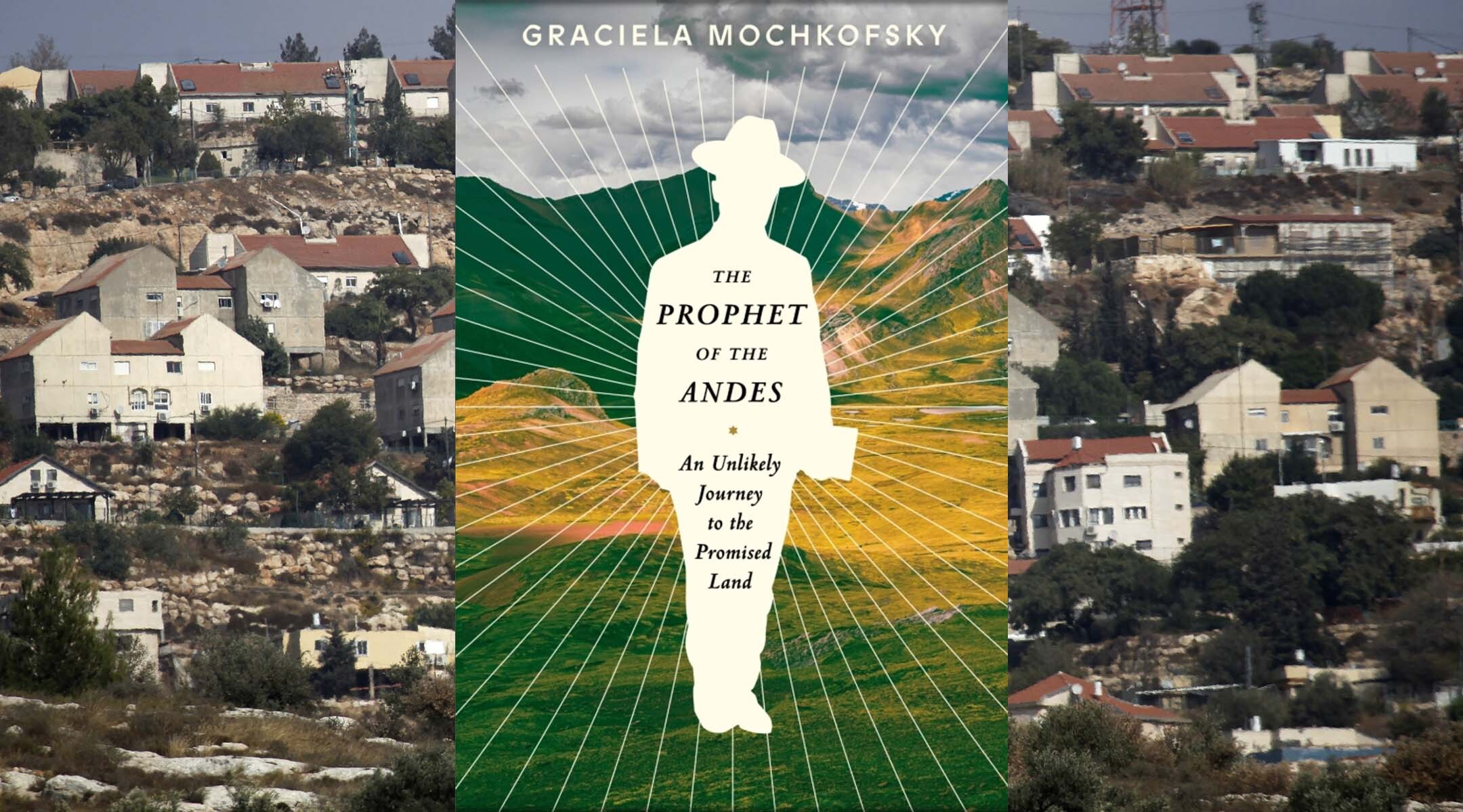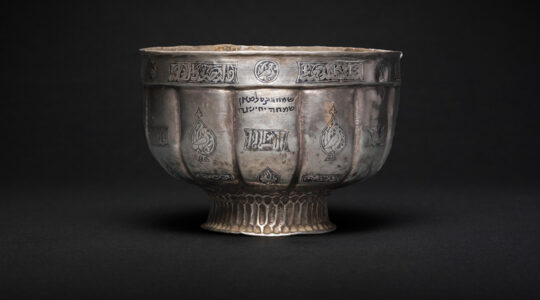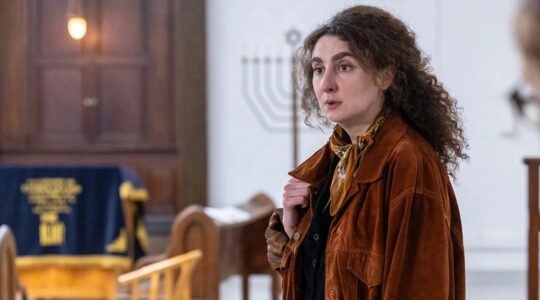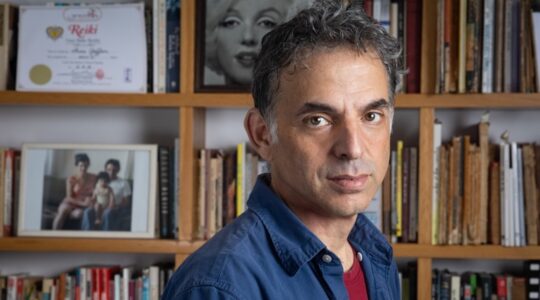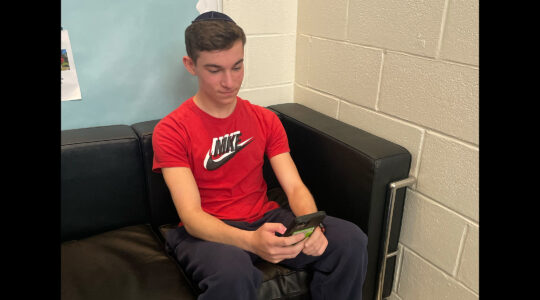(JTA) — The 1981 winner of Peru’s competition of Israel’s International Bible Contest did not come from among the country’s many devoted Christians nor from Lima’s elite Jewish school.
Instead, the top prize went to Victor Chico, a self-taught man in his thirties who practiced Judaism with a small sect of Peruvian natives led by a man named Segundo Villanueva. Spurred initially by Villanueva’s searching for truth as a religious Christian, the group had adopted Jewish practices and beliefs, celebrated holidays and even hired a doctor to circumcise the men. But local rabbis, surprised by the group and concerned about whether they had truly left Christianity behind, had rebuffed them.
For Chico, Villanueva and their community, the prize was a sign that they had finally earned recognition and respect for their devotion to Judaism.
Behind the scenes, the opposite was taking place: Peruvian Jewish leaders lobbied the local businessman who was paying for the winner to travel to Israel not to follow through. But the Israeli ambassador to Peru rejected that idea, and Chico took his first trip abroad, to Jerusalem.
“God of Abraham, of Isaac and of Jacob, if you allow it, make it so that I return with my family and the members of my community,” he wrote on a slip of paper that he placed, as so many others have before and since, between the stones of the Western Wall.
It would be nine years before Chico and other members of his community would make it back to Israel. During that time, they would choose a new name — Bnei Moshe, or Children of Moses — and battle mightily for acceptance by Peru’s and Israel’s Jewish leadership. At home, that acceptance would never truly come. But Israel’s doors would open, thanks to advocacy by activists intent on gathering Jews from far-flung lands, no matter their origins.
The saga of the Bnei Moshe unspools in “The Prophet of the Andes: An Unlikely Journey to the Promised Land,” a new book by the journalist Graciela Mochkofsky. Mochkofsky was living and working in her native Argentina in 2003 when she came across the story of the so-called “Inca Jews,” a successor group that was still hoping to move from Peru to Israel. Two weeks after that, she was in a hilltop settlement in the West Bank, meeting with Villanueva’s family.
It had been more than 10 years since the Peruvian immigrants landed at Tel Aviv’s Ben Gurion Airport, and not all had gone according to the group’s Holy Land dreams. Mochkofsky would spend the next two decades reconstructing the spiritual struggle that brought them to Israel, and the fault lines in contemporary Judaism that influenced their experience there.
“What I’ve learned as a journalist is that things are usually not exactly what they seem, or what they look like,” she told the Jewish Telegraphic Agency. “It’s always way more layered and complicated. And I love Segundo’s story because of that.”
We spoke to Mochkofsky, who this month assumed the deanship of the Craig Newmark Graduate School of Journalism at CUNY, about her reporting on the Bnei Moshe, the challenge of reconstructing a religious awakening and how her book evolved as she learned more about the ideological debates that shaped Villanueva’s experiences.
The conversation has been edited for length and clarity.
JTA: How did you decide to spend decades reporting on Segundo Villanueva and the mass conversion movement he led?
GM: I found this story on the internet. I was looking for something else, something that had to do with personal identity and the fact that I grew up in a very Catholic region of the world that has a very strong Jewish history at the same time. My father is Jewish, and my mom is a Catholic, and I was raised as a Catholic, but then I became very interested in Judaism. Buenos Aires is a very Jewish city. I wrote a book about Jacobo Timerman, who was this major figure in Argentina [Timerman was a journalist and then political prisoner who agitated against state antisemitism in Argentina]. I became very interested in the history of Judaism in Argentina, and how that was a very important part of my identity.
So when I found this letter that talked about converting Inca Indians in Peru, I was intrigued. I know there’s no Inca Indians in Peru today. But here was this rabbi asking for donations. And he told the story of this man, Segundo Villanueva, that was unbelievable: It was this conversion out of nothing, and a mass conversion — now, a contemporary mass conversion — and then these people had been taken to Israel.
There was a phone number at the bottom for people who wanted to donate. As a reporter, you sometimes have this instinct — I just want to know more — and I remember running to the phone. This woman answered. It turned out, Rabbi Myron Zuber had passed away, and the woman who picked up the phone was the widow.
She was one of the Peruvian converts. He had gone to the community and had stayed there for a year and then had come back to Monsey [an Orthodox community near New York City] with a young wife. And then he passed away. She immediately recognized my accent, and so we spoke in Spanish. And at the end of the call, she gave me all the contact information for Segundo Villanueva’s family. Three weeks later, I was in Tapuach, in Israel, where this family lived.
Was there a moment when you realized that this was something you were going to devote yourself to? And how did the project evolve over the two decades that you worked on it?
I was just following my instincts. But no one had really written about them. There had been a few articles in Peru, but they didn’t tell much about the community. And there had been articles in the Israeli press from when they arrived. But that was all. [JTA also covered Peruvian converts who were left behind and the debate over how and whether to help them in multiple articles in 2002.]
So out of instinct that there was something here that was important, I started. I did a first version of the book, but I’ve been incredibly lucky to have been able to look at that and say, you know, I can do this better. I’m very excited that I am finally writing the story as I think it should be written.
I realized that one big thing missing from my first attempt was the historical context, to go deep into ideas about who is a Jew and how such a critical question had been answered and how the answer to that question has been changing. I knew there was a lot of literature around that that I couldn’t find in Argentina. I spent two years just reading and talking to people and calling experts and sharing drafts of the book, asking Bible scholars, what am I getting wrong?
Also, in my first attempt to write this book, I didn’t center it in Segundo as much as in the community. I didn’t see how much Segundo and the group of men who were with him throughout, almost from the beginning to almost to the end, were really Bible nerds. They were scholars, in their own way. His child is a rabbi in Israel, and we can see in him what Segundo might have been in very different circumstances. This is a guy who really studies, spending hours every night and every moment that he had when he wasn’t working on this project. I wanted to focus on him this time because it really came from his mind and his ambition and his desire to understand this book [the Bible], and his trouble doing it. It took his entire life and he wasn’t done at the end.
How did you reconstruct Segundo’s inner life and inner journey?
This book is nonfiction. I’m not in his mind. He had dementia when I met him, so he couldn’t tell me this is what I thought. But he did tell other people what he thought. So I went to documents, videos, and people, mostly people, particularly his son and brother and other members of the community from different moments, and I reconstructed what he was telling them. He was alone in a very human sense, but he was actually collectively looking for these answers. I used those narratives, all of the ones I could find, to go back and explain.
He did talk a lot throughout his life about his first reading [of the Bible], and what it was that he found so compelling or so troubling or so fascinating. So there’s a whole chapter where we are reading the Bible with him for the first time as if it were just a book.
But there’s a lot that I don’t know. To me, you end up reading the book, and he’s still a little bit a mystery. I like that, because I do feel that everyone is like that: You can really never know someone, even yourself. I’m at peace with not knowing everything. I did what I could with the constraints that a journalist has.
As you say, the first half of the book is about the spiritual grappling of religious Christians whose questions lead them to Judaism. The second half is about the Jewish world, and its intersection with this group of Peruvians, and the question of who is a Jew. What stood out to you about this juxtaposition and what did you learn from it?
This book has so many twists and turns — it’s a story that to me, from the beginning, seems to be going in one direction, and then it just goes in a completely unexpected direction. I really wanted to convey that because I feel that was their experience, particularly Segundo Villanueva’s experience. And I think there’s no answer to the question [of who is a Jew]. The interesting thing to me is that there’s multiple answers to the question, and it can be very personal.
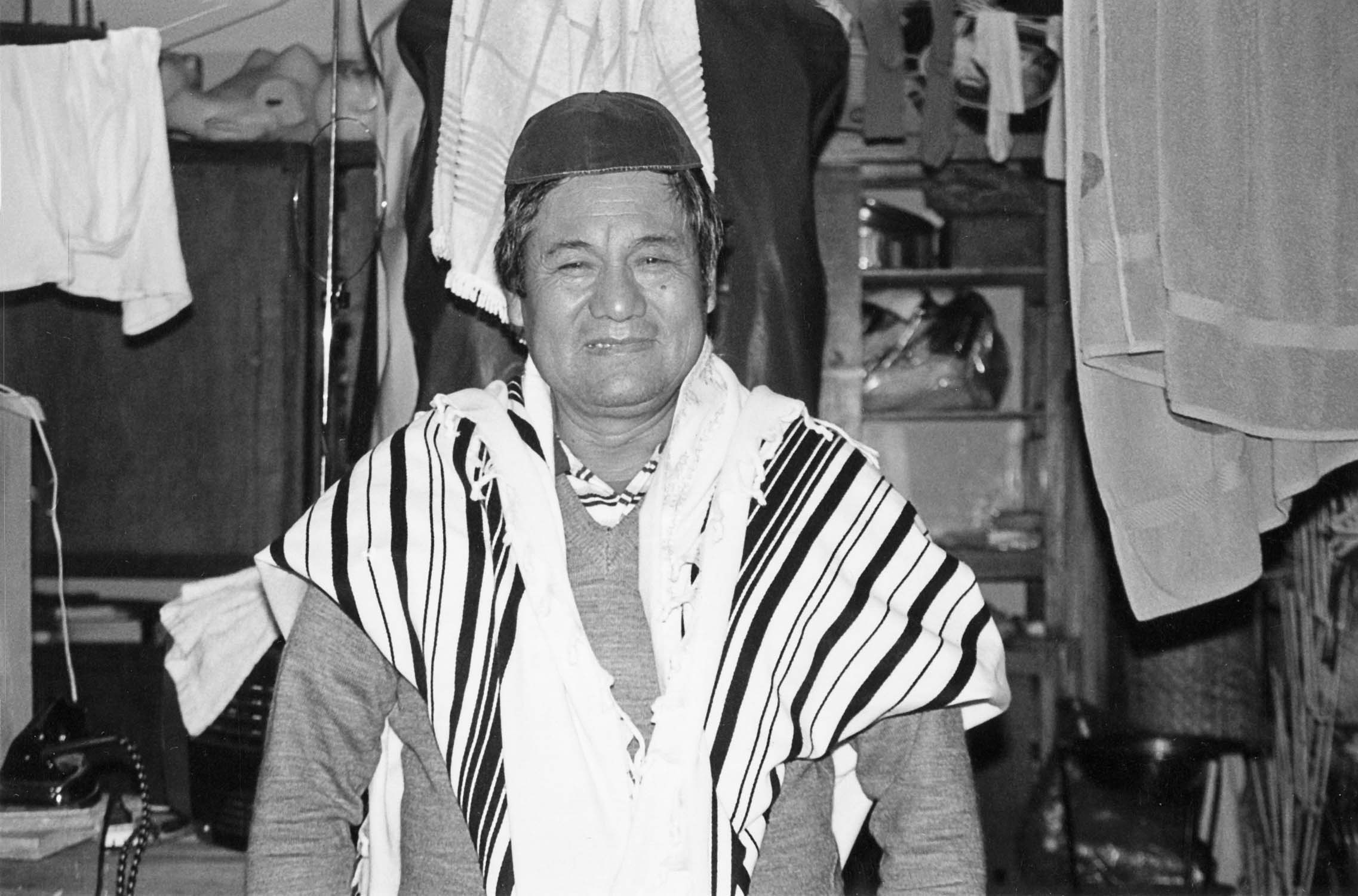
Agustín Araujo, an Inca Jew, shown in Cajamarca, Peru, in 2004.(Coutesy of Graciela Mochkofsky)
And that’s the story in the book: that people find different answers to the question. Some of the answers are rejected by outsiders, and some are embraced. But for the main character — he is not a character, he was a real person — for the main protagonist of the story, there were answers that were then insufficient. And he kept looking. It was an impossible quest, because he was never going to have a definitive answer.
I do think there’s something universal about that, about the quest for truth, and how elusive it can be. Segundo Villanueva went out of his world, constantly. The story begins with a scene in this remote hamlet in the Andes [where Villanueva was born]. To see that place that’s so out of time to us, and to think Segundo started there — how did he envision something so different, and then how did he find it? To me, that is part of what makes this story so literary, and so beautiful.
For readers who know a lot about Israel, what takeaways did you have from reporting about the Bnei Moshe about the immigrant experience there?
There’s a whole chapter about how they ended up where they ended up, and why of all places, they went to these settlements. I tried to reconstruct that as closely as I could. For a lot of the Israeli press at the beginning, it was: They were being used as pawns in a war that wasn’t theirs, in a project that wasn’t theirs. They were not. They wanted to go to Israel — they did not care where — and they wanted to stay together.
Where they first went, the neighbors were incredibly welcoming, and they felt loved right away and really welcomed with open arms. But as time went by, they started to understand all of these very different elements and how complicated it was, and how they were perceived by mainstream Israel, and they resented being called Indian. I hate the word problematic, but I think it makes sense to say there was very problematic coverage about their perceived indigenous origin that was offensive for them. It made them just innocent; it took any agency out of them.
Once they understood the politics, most of them embraced them. They are actually part of that [religious Zionist] movement now very much willingly.
There’s another layer of nuance, which is they were asked to choose a congregation and a community. And Segundo didn’t want to do that. He wanted all the Jews to be together — for him, that was important. You can imagine the clash of the cultures. And I think that made things very, very hard for Segundo.
A high point in the family’s story, and the point when it was most widely understood contemporaneously, was when they were finally admitted to Israel after many years of trying. And then it’s not great after that. What did you make of that?
The family I first met, Segundo’s daughters, their dream has come true. It’s an immigrant story, and for the second generation, it’s been a very successful story. Segundo Villanueva’s grandchildren don’t speak Spanish. They are very much settlers and Israelis, with the complexity of those identities. Every time I talked to them, they were really happy. They were living the dream.
For the first generation, for the people who did the work, particularly for Segundo, but also some of his contemporaries, it was not. As the story progresses, there’s two things: One, he keeps looking for answers. He doesn’t think rabbinical Judaism is the answer. That’s not the church he’s been looking for. He doesn’t think they really interpret the Torah the way it should be interpreted. And so he keeps going to these groups that are further removed from rabbinical Judaism. And then, and then he doesn’t want to be in the settlements, he gets scared. This is in the middle of the Second Intifada, and he wants out, and it’s too late for him to be out. He’s not invested in that project. He doesn’t want to be part of these very complicated politics and of this war. And then he loses his community. He’s alone. For him, the story ends as a tragedy.
Should I be telling this to the readers before they read the book? I don’t know. But to me, that makes the story more real, more human.
JTA has documented Jewish history in real-time for over a century. Keep our journalism strong by joining us in supporting independent, award-winning reporting.
